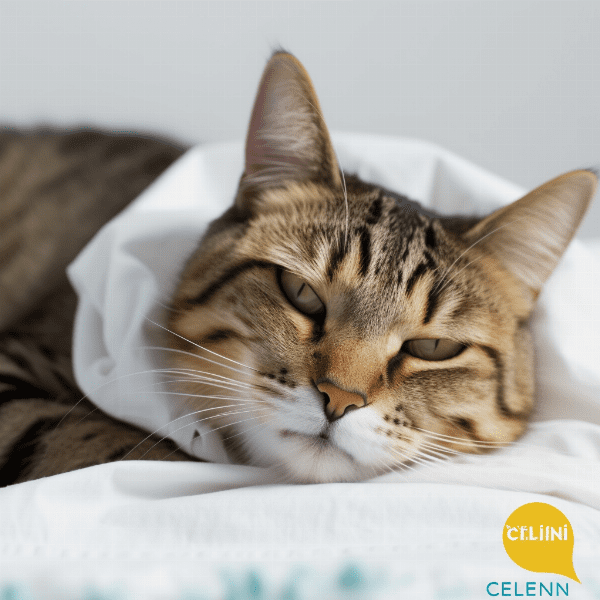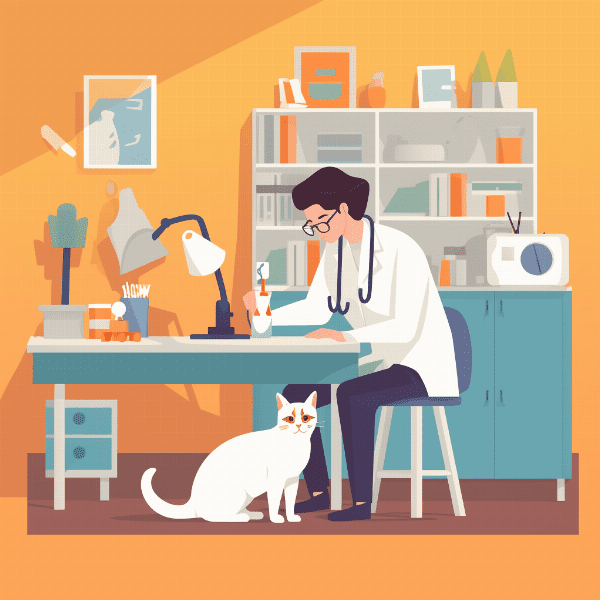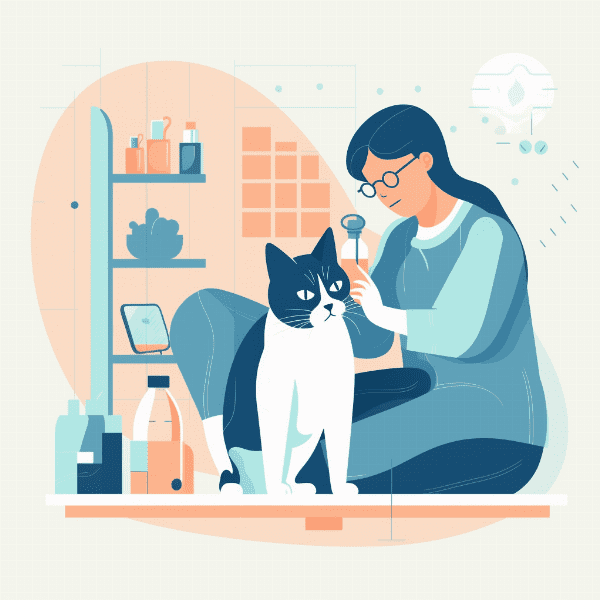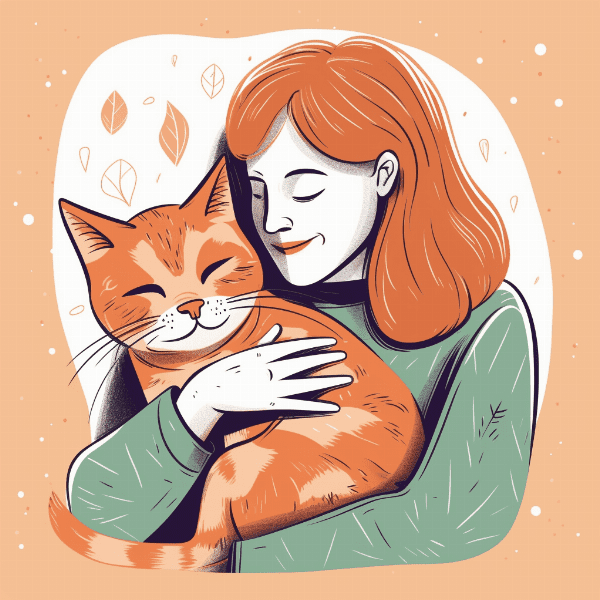Table of Contents
- Introduction to Feline Viral Infection
- Types of Feline Viral Infections
- Causes of Feline Viral Infections
- Symptoms of Feline Viral Infections
- Diagnosis of Feline Viral Infections
- Treatment of Feline Viral Infections
- Preventing Feline Viral Infections
- Living with a Cat with Viral Infection
- When to Seek Veterinary Care
- Conclusion and Future Outlook
Introduction to Feline Viral Infection
As a cat owner, it’s essential to be aware of the various diseases that can affect your furry friend. Feline viral infections are a group of diseases caused by viruses that can impact your cat’s health and wellbeing. These infections can affect cats of all ages, breeds, and lifestyles. Some common feline viral infections include feline calicivirus, feline herpesvirus, feline immunodeficiency virus (FIV), feline leukemia virus (FeLV), and others.
Understanding Viral Infections
A viral infection is a type of infection caused by a virus that enters the body and infects cells. Viruses are tiny microorganisms that can cause a wide range of infections, from the common cold to more severe diseases like Ebola and COVID-19. Viruses are not living organisms, and they cannot reproduce outside of a host cell. Instead, they rely on host cells to multiply and spread throughout the body.
How Do Cats Get Viral Infections?
Feline viral infections are contagious, and cats can contract them through contact with other infected cats or objects contaminated with the virus. Some viruses can spread through the air, while others are transmitted through saliva, urine, feces, and other bodily fluids. Kittens are particularly vulnerable to viral infections as their immune systems are not fully developed.
Why is it Important to Recognize Feline Viral Infections?
Feline viral infections can have serious consequences for your cat’s health, ranging from mild symptoms like sneezing and coughing to more severe conditions like pneumonia and organ damage. In some cases, viral infections can even be fatal. Therefore, recognizing the symptoms of feline viral infections and seeking prompt veterinary care is crucial to ensure your cat receives the appropriate treatment and has the best chance of recovery.
Conclusion
In conclusion, feline viral infections are a common and potentially serious health concern for cats. Understanding how these infections spread and the symptoms they cause can help you recognize when your cat is sick and in need of veterinary care. In the next sections, we’ll delve deeper into the different types of feline viral infections, their causes, symptoms, and treatment options.

Types of Feline Viral Infections
Feline Calicivirus (FCV)
Feline calicivirus is a highly contagious virus that affects cats of all ages. This virus can cause respiratory infections, mouth ulcers, and in severe cases, pneumonia. Cats can contract FCV through contact with infected cats, contaminated objects, or through the air.
Feline Herpesvirus (FHV-1)
Feline herpesvirus is another common viral infection that affects cats. It’s highly contagious and can cause respiratory infections, eye infections, and in severe cases, pneumonia. Kittens and older cats with weakened immune systems are particularly vulnerable to FHV-1.
Feline Immunodeficiency Virus (FIV)
Feline immunodeficiency virus is a viral infection that attacks a cat’s immune system, making them more susceptible to other infections and illnesses. FIV is spread through bites from infected cats, and outdoor cats that fight with other cats are at a higher risk of contracting the virus.
Feline Leukemia Virus (FeLV)
Feline leukemia virus is a viral infection that attacks a cat’s immune system and can lead to the development of cancer. Cats can contract FeLV through contact with infected cats, usually through saliva, urine, and other bodily fluids.
Other Viral Infections
Other viral infections that can affect cats include feline infectious peritonitis (FIP), feline panleukopenia (FPV), and others. These viruses can cause a range of symptoms, from gastrointestinal issues to neurological problems, and in severe cases, death.
Conclusion
In conclusion, feline viral infections are caused by a wide range of viruses, each with its unique set of symptoms and potential complications. Recognizing the different types of feline viral infections and their symptoms can help you provide appropriate care for your cat and prevent the spread of these infections to other cats. In the next sections, we’ll explore the causes, symptoms, diagnosis, and treatment options for feline viral infections.

Causes of Feline Viral Infections
Feline viral infections are caused by a variety of viruses, and the way they spread depends on the specific virus. Here are some of the most common causes of feline viral infections:
Contact with Infected Cats
Many feline viral infections are highly contagious and can be spread through contact with infected cats. This can occur through direct contact with an infected cat, such as through grooming, sharing food or water bowls, or during mating. Indirect contact can also occur through shared objects, such as litter boxes, bedding, toys, and scratching posts.
Exposure to Contaminated Objects
Some feline viruses can survive on objects for a period, making it possible for cats to become infected by coming into contact with contaminated objects. For example, cats can contract feline herpesvirus by coming into contact with contaminated surfaces such as food bowls, water dishes, or litter boxes.
Outdoor Exposure
Cats that spend time outdoors are at a higher risk of contracting feline viral infections. Outdoor cats may come into contact with other infected cats, and they may also be exposed to contaminated objects or environments. Outdoor cats are also more likely to engage in fights with other cats, which can result in bite wounds and the spread of viruses like FIV.
Mother-to-Kitten Transmission
Some feline viral infections can be passed from a mother cat to her kittens during pregnancy, birth, or through nursing. Kittens are particularly vulnerable to viral infections as their immune systems are not fully developed, and they rely on their mother’s antibodies to protect them.
Conclusion
In conclusion, feline viral infections can be caused by a variety of factors, including contact with infected cats, exposure to contaminated objects or environments, outdoor exposure, and mother-to-kitten transmission. Understanding the causes of feline viral infections can help you take appropriate steps to protect your cat and prevent the spread of these infections. In the next sections, we’ll explore the signs and symptoms of feline viral infections and how they are diagnosed and treated.

Symptoms of Feline Viral Infections
Feline viral infections can cause a wide range of symptoms, which can vary depending on the specific virus and the severity of the infection. Here are some common symptoms to look out for:
Conclusion
In conclusion, feline viral infections can cause a wide range of symptoms, and the specific symptoms may vary depending on the virus and the severity of the infection. If you notice any of the symptoms mentioned above or any other unusual behavior in your cat, it’s essential to seek veterinary care immediately. In the next sections, we’ll explore how feline viral infections are diagnosed and treated, and we’ll discuss preventative measures to keep your cat healthy.

Diagnosis of Feline Viral Infections
Diagnosing feline viral infections requires a thorough physical examination, along with various diagnostic tests. Here are some common methods used to diagnose feline viral infections:
Physical Examination
A physical examination is the first step in diagnosing a feline viral infection. Your veterinarian will examine your cat for any signs of illness, including checking for fever, respiratory symptoms, oral symptoms, and neurological symptoms.
Blood Tests
Blood tests can be used to detect the presence of certain viral infections, including FIV and FeLV. These tests measure the levels of antibodies in the blood and can help confirm a diagnosis.
Viral Cultures
Viral cultures involve collecting samples from your cat, such as saliva, nasal discharge, or urine, and growing them in a laboratory. This can help identify the specific virus causing the infection.
Polymerase Chain Reaction (PCR) Tests
PCR tests are a type of molecular test that can detect the presence of viral DNA or RNA in a sample. These tests are highly sensitive and can help diagnose viral infections, even in cases where viral loads are low.
Biopsy
In some cases, a biopsy may be necessary to diagnose a feline viral infection. A biopsy involves taking a small tissue sample from an affected area and examining it under a microscope. This can help identify any abnormalities or signs of infection.
Conclusion
In conclusion, diagnosing feline viral infections requires a combination of physical examination and diagnostic tests. Blood tests, viral cultures, PCR tests, and biopsies are all methods that can be used to diagnose feline viral infections. It’s essential to seek veterinary care as soon as you suspect your cat has a viral infection to ensure they receive appropriate treatment. In the next section, we’ll explore the various treatment options for feline viral infections.

Treatment of Feline Viral Infections
Treating feline viral infections depends on the specific virus and the severity of the infection. Here are some common treatment options for feline viral infections:
Supportive Care
Supportive care is often the first line of treatment for feline viral infections. This can include providing your cat with a comfortable and quiet space to rest, encouraging them to drink fluids, and feeding them a nutritious diet to support their immune system.
Medications
Antibiotics may be prescribed for secondary bacterial infections that can occur alongside feline viral infections. Antiviral medications may also be used to treat certain viral infections, such as feline herpesvirus.
Symptomatic Treatment
Symptomatic treatment can help relieve the symptoms of feline viral infections, such as administering eye drops to help with eye discharge or providing medication to alleviate respiratory symptoms.
Hospitalization
In severe cases, hospitalization may be necessary to provide intensive care, intravenous fluids, and supportive treatment.
Preventative Measures
Preventative measures, such as vaccination and proper hygiene, can help prevent feline viral infections from occurring in the first place. Vaccinations are available for many feline viruses, including FHV-1, FCV, and FeLV. Proper hygiene, such as cleaning litter boxes and frequently washing food and water bowls, can also help reduce the risk of infection.
Conclusion
In conclusion, treating feline viral infections requires a combination of supportive care, medication, and symptomatic treatment. In severe cases, hospitalization may be necessary. Preventative measures, such as vaccination and proper hygiene, can also help reduce the risk of feline viral infections. If you suspect your cat has a viral infection, it’s important to seek veterinary care as soon as possible to ensure they receive appropriate treatment.

Preventing Feline Viral Infections
Preventing feline viral infections is essential for maintaining your cat’s health and wellbeing. Here are some preventative measures you can take to reduce the risk of feline viral infections:
Vaccinations
Vaccinations are an effective way to prevent many feline viral infections, including FHV-1, FCV, and FeLV. Kittens should receive their initial vaccinations between 6-8 weeks of age, with boosters given at regular intervals throughout their life. Vaccination schedules may vary depending on the specific vaccine and your cat’s lifestyle.
Proper Hygiene
Proper hygiene is crucial for reducing the risk of feline viral infections. This includes cleaning litter boxes daily, washing food and water bowls frequently, and regularly cleaning and disinfecting your cat’s toys, bedding, and other objects they come into contact with.
Keep Indoor Cats Indoors
Indoor cats are at a lower risk of contracting feline viral infections than outdoor cats. Keeping your cat indoors can help reduce their exposure to other infected cats and contaminated objects.
Preventing Fights
Fights between cats can spread feline viral infections, especially FIV. If you have multiple cats, it’s essential to introduce them slowly and carefully, and to provide each cat with their own food, water, and litter box. Keeping your cat indoors can also reduce the risk of fights with other cats.
Regular Veterinary Care
Regular veterinary care is essential for maintaining your cat’s health and catching any potential issues early on. Regular check-ups and preventative care, such as dental cleanings, can help reduce the risk of feline viral infections.
Conclusion
In conclusion, preventing feline viral infections requires a combination of vaccinations, proper hygiene, keeping indoor cats indoors, preventing fights, and regular veterinary care. By taking these preventative measures, you can help reduce the risk of feline viral infections and keep your cat healthy and happy.

Living with a Cat with Viral Infection
If your cat has been diagnosed with a viral infection, there are steps you can take to help them feel more comfortable and support their recovery. Here are some tips for living with a cat with a viral infection:
Follow Your Veterinarian’s Instructions
Your veterinarian will provide you with specific instructions for caring for your cat, including medication dosages and administration, dietary recommendations, and any other necessary treatments. It’s important to follow these instructions closely to ensure your cat receives the best possible care.
Isolate Infected Cats
If you have multiple cats, it’s essential to isolate any infected cats to prevent the spread of the virus to other cats. This may mean keeping them in a separate room or area of the house and providing them with their own food, water, and litter box.
Keep Your Cat Comfortable
Providing your cat with a comfortable and quiet space to rest can help them feel more comfortable while they recover. Ensure they have access to plenty of fresh water and nutritious food, and provide them with a warm and cozy place to rest.
Monitor Your Cat’s Symptoms
Monitoring your cat’s symptoms can help you track their progress and ensure they are responding to treatment. If you notice any changes in your cat’s behavior or symptoms, it’s important to contact your veterinarian immediately.
Be Patient
Recovery from a viral infection can take time, and it’s essential to be patient and provide your cat with plenty of love and support during their recovery.
Conclusion
In conclusion, living with a cat with a viral infection requires careful attention and support to ensure they receive the best possible care. By following your veterinarian’s instructions, isolating infected cats, keeping your cat comfortable, monitoring their symptoms, and being patient, you can help support your cat’s recovery and keep them healthy and happy.

When to Seek Veterinary Care
If you suspect your cat has a viral infection, it’s essential to seek veterinary care as soon as possible. Here are some signs that indicate it’s time to contact your veterinarian:
Respiratory Symptoms
If your cat is experiencing respiratory symptoms such as coughing, sneezing, and difficulty breathing, it’s important to seek veterinary care immediately. These symptoms can indicate a serious viral infection, such as FHV-1 or FCV.
Oral Symptoms
Oral symptoms such as mouth ulcers, gingivitis, and stomatitis can be very painful for cats and can make it difficult for them to eat and drink. If your cat is experiencing any oral symptoms, it’s important to seek veterinary care as soon as possible.
Gastrointestinal Symptoms
Gastrointestinal symptoms such as vomiting, diarrhea, and loss of appetite can indicate a viral infection or other serious illness. If your cat is experiencing any of these symptoms, it’s essential to seek veterinary care to prevent dehydration and other complications.
Neurological Symptoms
Neurological symptoms such as seizures, tremors, and difficulty walking or standing require immediate veterinary attention. These symptoms can indicate a serious viral infection or other neurological condition.
Other Symptoms
Other symptoms, such as lethargy, fever, and anemia, can also indicate a viral infection or other underlying condition. If you notice any changes in your cat’s behavior or symptoms, it’s important to seek veterinary care.
Conclusion
In conclusion, if you suspect your cat has a viral infection, it’s important to seek veterinary care as soon as possible. Respiratory symptoms, oral symptoms, gastrointestinal symptoms, neurological symptoms, and other symptoms can all indicate a serious viral infection or other underlying condition. By seeking veterinary care promptly, you can help ensure your cat receives appropriate treatment and support their recovery.

Conclusion and Future Outlook
Feline viral infections can be challenging to diagnose and treat, but with proper care and attention, cats can recover and lead healthy, happy lives. Here are some key takeaways from this guide:
If you suspect your cat has a viral infection, it’s essential to seek veterinary care as soon as possible to ensure they receive appropriate treatment.
In the future, advances in veterinary medicine may lead to new treatments and prevention methods for feline viral infections. By staying up-to-date on the latest research and working closely with your veterinarian, you can help ensure your cat receives the best possible care and support their health and wellbeing.




